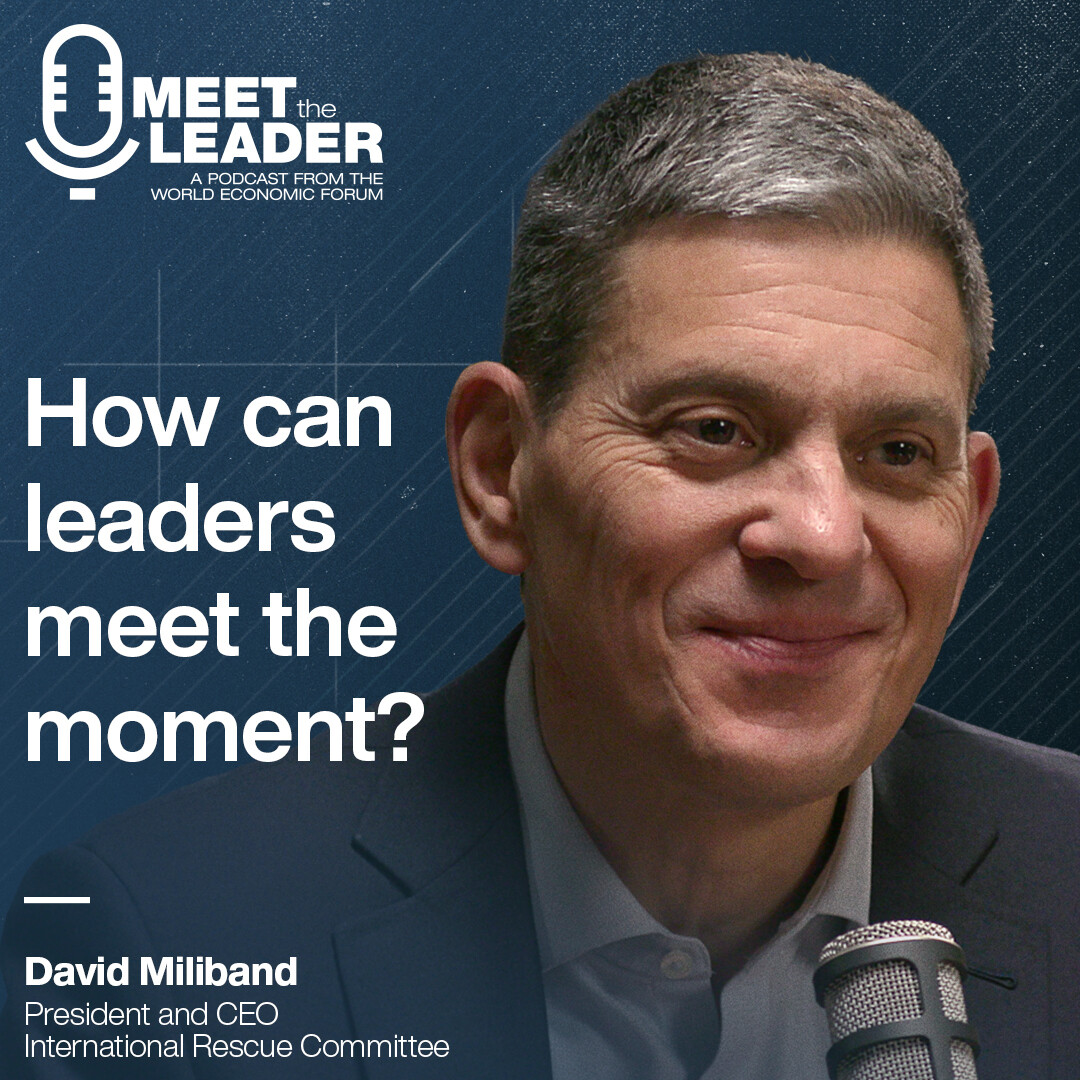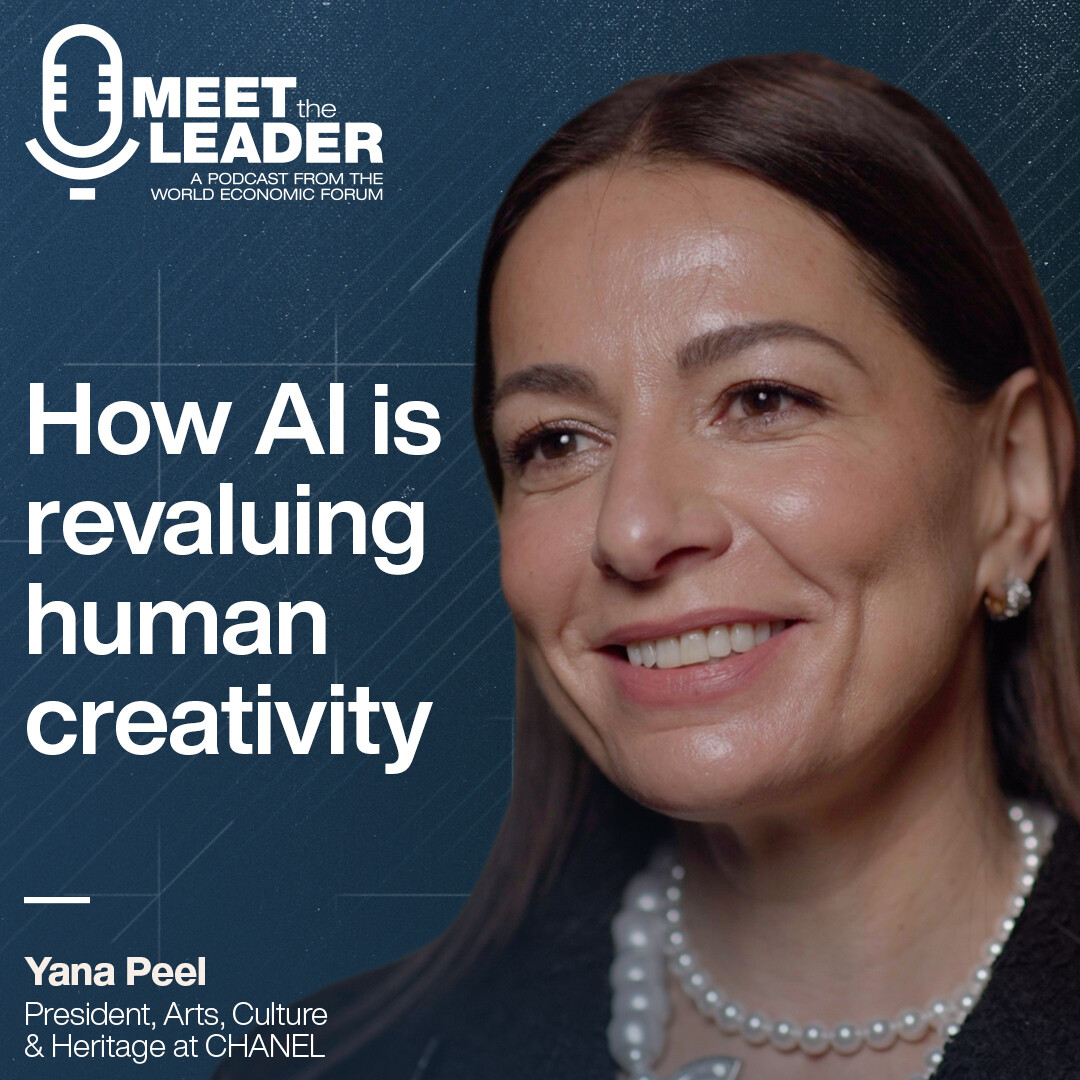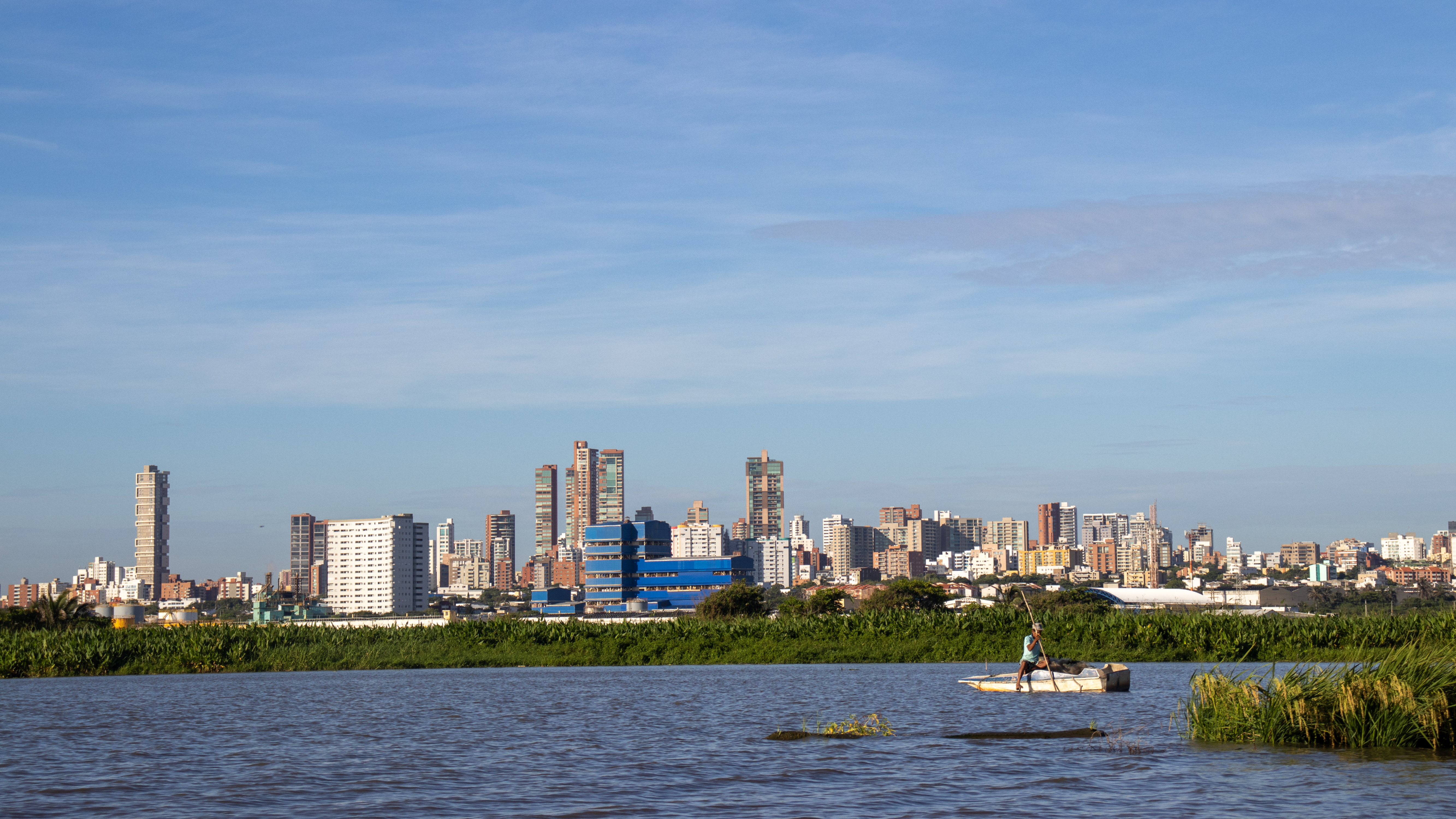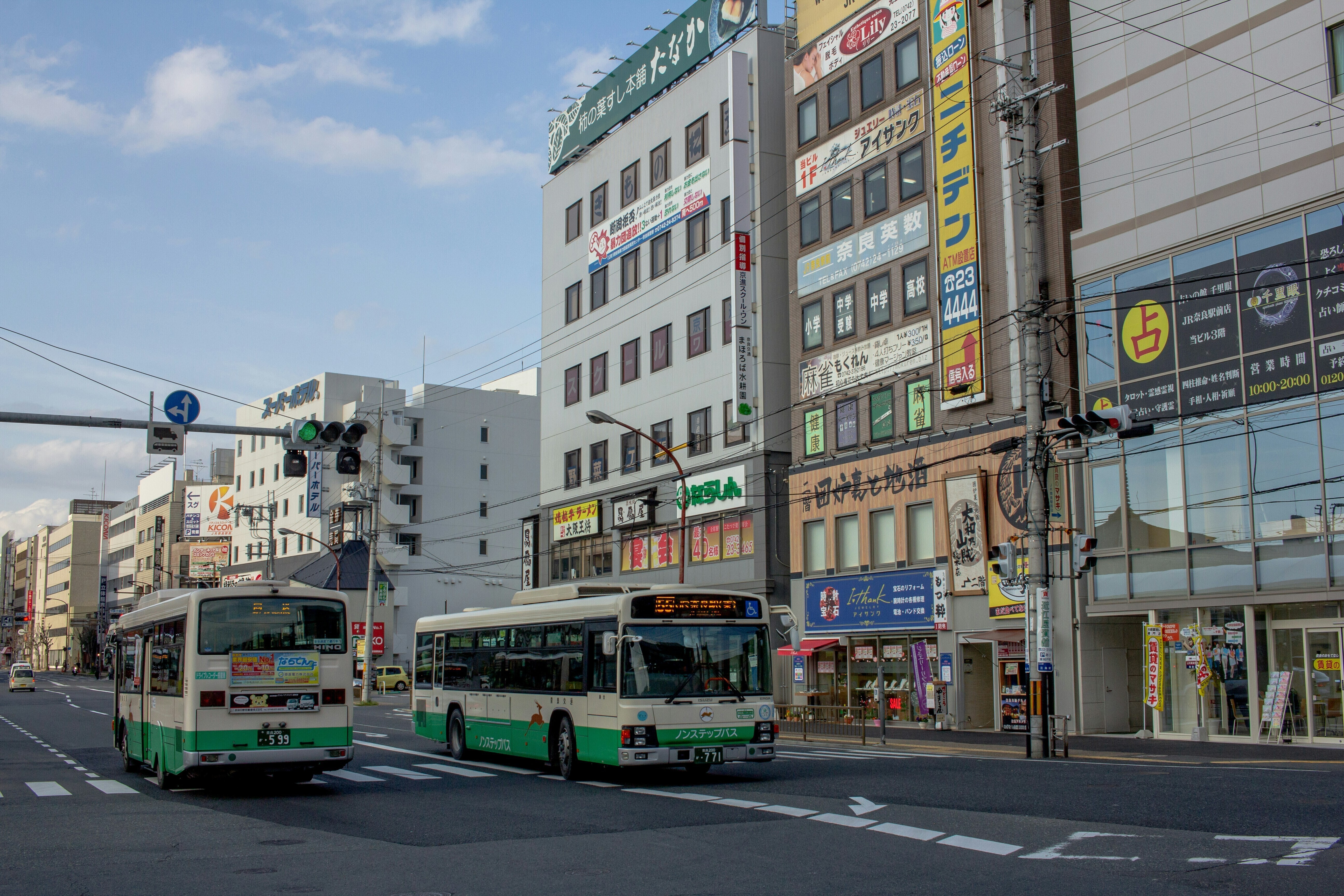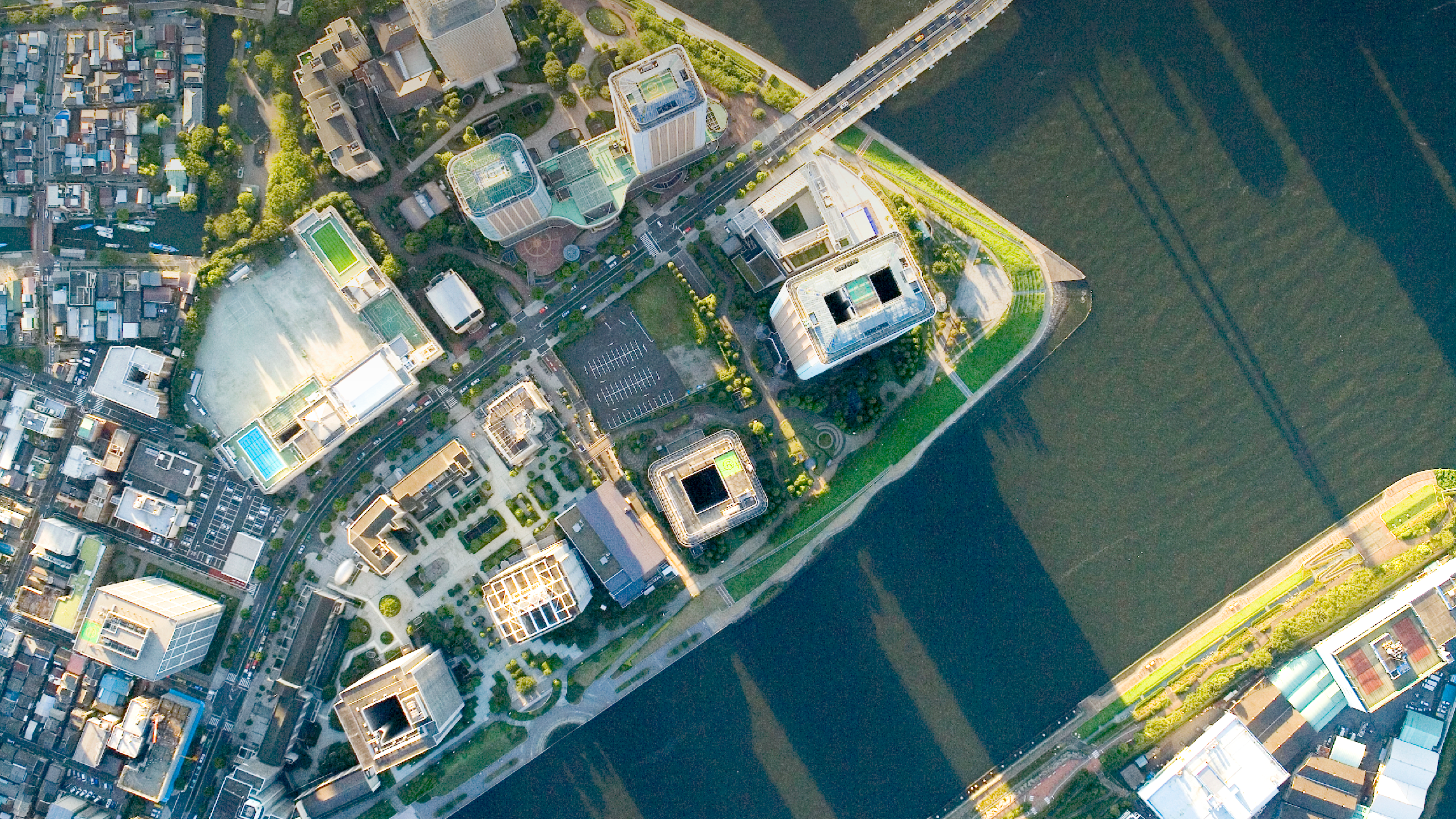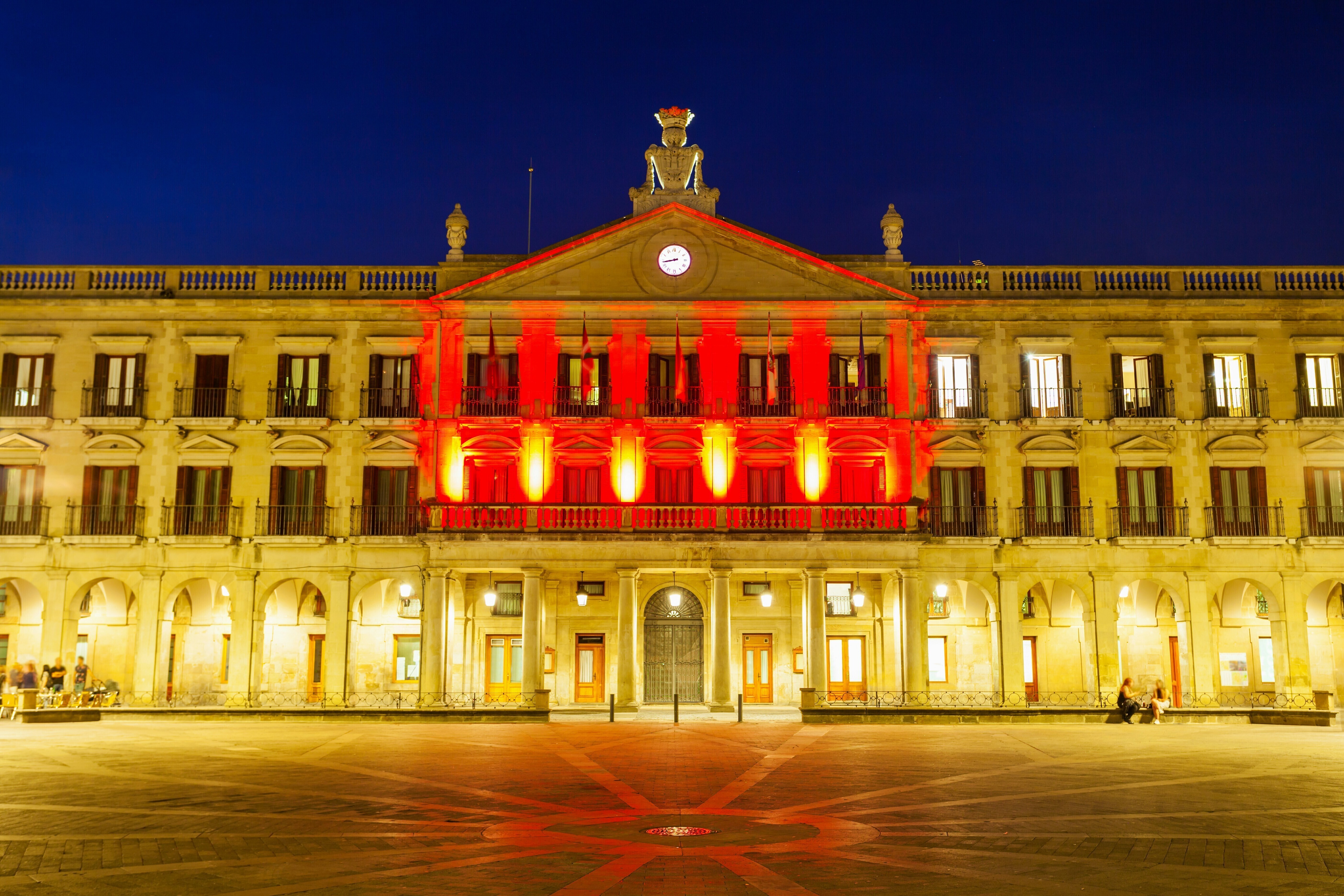Transportation’s 'moment of reinvention' - what could drive equity, sustainability and more
Unsafe, costly transit contributes to everything from wealth and equity gaps to pollution. But as cities grapple with growing populations, shifting needs, technological advancement and the energy transition, we’re approaching a moment of reinvention that could lead to positive change if planned correctly. Benjamin de la Peña, the CEO of the Shared-Use Mobility Center breaks down the incentives and strategies that could drive more climate-ready, equitable, safe and affordable transportation. He also discusses the importance of systems thinking and planning that factors in the generations to come -- thinking that can help any leader make big change happen.
ポッドキャスト・トランスクリプト
Linda Lacina, Meet The Leader Welcome to Meet the Leader, the podcast where top leaders share how they are tackling the world's toughest challenges. In today's episode, we talk to Benjie de la Pena.
He is a mobility expert and the CEO of the Shared Use Mobility Center. He'll talk about the key changes that will make it easier for everyone to finally get around in cities all around the world.
Subscribe to Meet the Leader on Apple, Spotify, and wherever you get your favorite podcasts. And don't forget to rate and review us.
I'm Linda Lacina from the World Economic Forum and this is Meet the Leader.
Benjie de la Pena, Shared Use Mobility Center I think a lot of cities should require that their public officials and public servants take public transportation four days out of the week. That's the kind of thing that will stimulate the right questions.
Linda Lacina, Meet The Leader Transportation as we know it is broken. Just in the United States, more than 1 in 4 adults are 'transportation insecure'. That means that they don't have a safe or a reliable way to get where they need to go. These folks are more likely to face poverty, to belong in an underserved group, and they're more likely to live in cities. Things get a little bit more worrisome when we consider that most transportation infrastructure that we do have is usually crumbling, and that transport contributes to 14% of greenhouse emissions.
Like so many big problems, there is no one way to solve it. That's what Benjie de la Pena reminded me at our Urban Transformation Summit. He is the CEO of the Shared Use Mobility Center. That is a group dedicated to achieving equitable, affordable and environmentally sound mobility all across the US. He talked to me about the changes that are needed and the shift he is already seeing happening. He also talked about the transformations we will need to make to ensure that the solutions we put into place will sustain themselves. He'll talk about all of that, but first he'll define more about shared mobility.
Benjie de la Pena, Shared Use Mobility Center Shared mobility are all those ways that allow us to get around in cities, but also in rural areas without having to own a car. And that stretches from public transportation, whether it's a train or a bus or small bus, all the way to safe sidewalks, anything that allows you to get around without having to make the investment of owning a car. So the Shared Use Mobility Center, we've been around a decade now. What we do is both study the space, provide technical assistance to communities and cities that are trying to roll out more shared mobility and understanding the shared mobility space. And we also, you know, keep tabs on the research and what's new in the space.
Linda Lacina, Meet The Leader And when we talk about shared mobility, there's a shared mobility 2030 action agenda. Can you talk a little bit about the action agenda and why it's so important?
Benjie de la Pena, Shared Use Mobility Center Well, we're kind of at a moment of reinvention, right? We know that our transportation systems, the way we've built them out, are not sustainable and they're not equitable. 14% of greenhouse gas emissions globally come from surface or land transportation. And mostly that's private cars. And then from an equity standpoint, one out of every four adults in the US are transportation insecure, meaning if their bus doesn't come or their car breaks down, they have no idea how they're going to get to where they need to get to. The Shared Mobility Center really looks at how do we expand all of those options in the Shared Mobility 2030 action agenda is a grouping of now 70.
We started with 50 organizations. Now it's 70 organizations. These are public sector private companies, not for profits, who are basically saying in this moment of reinvention, we need to come out at 2030 and further, not just to have EVs everywhere. We do need to electrify, but to have more transportation options so that we address not just the climate issue. We also address racial and social equity and safety and affordability. So, for instance, EVs, if we roll them out, is great for reducing tailpipe emissions, but it's not very good at addressing equity.
And with the Shared Mobility 2030 action agenda saying we need to address climate and equity and safety and affordability on safety alone. 43,000 people died in the US last year from vehicular crashes. And EVs alone are not going to make a difference in that. In fact, there's research that shows. EVs might be a little more dangerous because they accelerate faster and they're heavier.
So there's a moment to rethink all of these systems and go to more of the systems that allow us to share mobility and not have to take up that much space in our oversize vehicles.
Globally, too, there's actually more shared mobility than there is car ownership. And so in this moment of reinvention of what will are climate ready, equitable, safe and affordable transportation system, what should it look like for our cities and our rural areas? That's where shared mobility can really, really play a part.
Linda Lacina, Meet The Leader Are there cities that have either innovative or unique shared mobility solutions that you're like, gosh, you know, this is really checking a load of boxes. It's checking the sustainability is checking equity. You know what comes to mind that can kind of help people visualize what this might look like.
Benjie de la Pena, Shared Use Mobility Center I wouldn't say that if there are their cities, right. It's like we're in the moment of things are being innovated, right. So there's progress on many fronts. But what it looks like is that you get up in the morning and you need to take a trip somewhere. It could be to work, it could be to school, it could be to your friend's house. And what you have is a whole host of options of how to get there. And that might be take your own car if you have your own car if you can afford it. Or it might be that's too short, you're just going to walk, or it might be that you go and say, there's a bike share in the corner. I'm just going to take that bike share and take it there.
Or there might be an on demand micro transit that you hail, and you share it with those people, and that takes you to where you're going. Or it could be public transportation that is very predictable and very accessible.
So there are many cities in the world with bits and parts of that. But I think what we're starting to see is the emergence of a full new system. What we've been doing in the West and have been slowly exporting to the global South, is the whole car-centric transportation. And the Shared Use Mobility Center is where working to shift our car centric transportation systems to more people-focused shared mobility for the climate, for equity, and for safety and affordability for community, really.
So going back to your question, are there leading cities? There are, but it's the emergence of a whole new system, and we're seeing parts of that. I mean, no city has yet completely perfected it, but we're growing into that because everywhere, I think, city leaders are realizing that electrifying the car is not going to be enough.
Linda Lacina, Meet The Leader So many different municipalities - maybe if you've never needed to use a bus - you don't know why you need to go pay taxes to support it. And so it becomes harder and harder that some of the transportation networks become more and more fragmented and disjointed. And so what's needed to sort of help galvanize people, build support for shared mobility, for people who have maybe never used it, so don't know why it's needed.
Benjie de la Pena, Shared Use Mobility Center It's interesting that you preface that. So why? Well, how would a person who's not using, let's say, shared or public transportation agree to being taxed for it? And yet we agree to be taxed for roads. And usually it's not whether you own a car or not. Households that don't own cars also pay for road maintenance and road building, and there's huge subsidies just for cars. And what we need to do is to shift and say, why don't we support all of the other modes? Right.
And so you've got a good example in London in congestion pricing, where they using the road pricing, congestion pricing to pay for more public transportation, to also subsidize some of the shading with the systems, including their bikeshare system in the building of bike infrastructure. In the Global South, for instance, a lot of mobility is actually shared. It's a shared mobility planet, and that could come in the form of what we call informal or popular transportation. If you go to Nairobi, the the methods and the motorcycle taxis in the cities of South Africa, it would be minibus taxis and also a lot of motorcycle taxis. The same thing in Nigeria. If you go to Indonesia, there will be smaller vans that are privately provided.
So all of these small ways, because we live in cities, people need to get around and short because cars are so unaffordable. Then people find ways to be sharing these systems and providing these systems. And I think there's really, really good attention in going in and saying, how do we support and empower more of these systems across the world? And that's part of the work that the Global Network for Public Transportation is exactly doing. Some really, really exciting work that's going on, not led by us, but we're just tracking it right.
In South Africa, they discovered that the Competitiveness Commission tracked it for, I think, three years, that there was a misallocation of resources, government resources that were supporting public transit was mostly 60 to 68% was going to trains. And then about, you know, close to 10% was going to buses, barely 1% was going to minibus taxi operations or supporting minibus taxi operations. Mostly that was for loan support so that the operators could buy new vehicles and their what they call Taxi recapitalization.
They looked at modules and it was nearly the opposite. 70% of all public and shared trips are happening through minibus taxis, and barely 3% were on trains. So there's kind of this looking at what are we spending on, really, and what can we empower now rather than thinking about we'll buy that new thing and it'll be sustainable ten years from now when we finally build it. And it might just serve 5% of our population. And there's work unlocking and legitimizing the informal transportation systems and figuring out how do we make them viable businesses because they already, even without subsidy, struggling yet survive, often with a lot of them regulatory headwinds.
Linda Lacina, Meet The Leader And what would be needed to make them into sort of more robust businesses?
Benjie de la Pena, Shared Use Mobility Center Well, one of the first things we have to acknowledge is that they are businesses in this. I think I'm thinking only of the transportation as a delivery system, right. And so we think of efficiency, which is a very modernist idea of how efficient are these things. And we forget that first and foremost, they are businesses. And we, I mean, the global community, have failed, particularly at just using efficiency as a measure of delivering transportation. The reason we built up so many roads is we thought it would make make it more efficient. Well, that's what led to more traffic congestion and more tailpipe emissions and therefore these huge carbon outputs. Right.
But if we think of them first as small and medium enterprises in the world has better traction and a better track record on how do you regulate and support small and medium enterprises? So they bring the public externalities, the public goods with them. If you start thinking of transportation providers of small and medium enterprises, and we make them efficient businesses, then they also become efficient transportation systems. And there's actually a lot of money flowing already in the system, even without support. And so if you could make them better transportation providers, they could grow and they could be more efficient, and we would hit both equity and you would hit decarbonization.
Linda Lacina, Meet The Leader Say, a decade, if the action agenda goes forth, you've got these things going in place. We've got the network is humming along, and more and more people are working in a really robust, good, great fashion. How is the world different?
Benjie de la Pena, Shared Use Mobility Center Well, there's a whole lot less parking, right? And cars kind of all over on our streets, but a whole lot more mobility and accessibility. Because if you get up in the morning and you need to go somewhere, the vehicle you need to use is right-sized for it. In other words, you're going to not use your SUV or electric SUV to drive under a mile to go to the convenience store to buy a quart of milk. Instead, you think, oh, this could be done with walking if it's close enough and you've got safe sidewalks, or I can take my electric bike or a shared bike somewhere and I'll take that. And so the vehicle and vehicle delivery system is fit to the need, rather than that the infrastructure system is fit to the vehicle time.
Linda Lacina, Meet The Leader Are there symptoms of a well-functioning transit system, shared mobility system, that don't always show up in the transportation itself? Like are there other areas where people can look at their lives and sort of say, hey, this is working? And honestly, it's because it's being supported by this infrastructure. What are other symptoms of this?
Benjie de la Pena, Shared Use Mobility Center Well, lower household cost is one. Yeah. It's not your second or third expense just to be able to get around see lower health costs. Mental health the biggest predictor of among adults of mental health challenges is the long commute. They've compared this in studies. People who ride bikes in their commute actually happier. And people who ride solo in cars are the least happy. So there's a mental health component to that.
There's also the power of socialization in shared services like public transportation and other shared services, because you're being around other people and that's social capital that gets built up. That's more cohesion within our societies. So there's multiple knock on effects that could happen if we rethink how we get around.
Linda Lacina, Meet The Leader What are the changes that need to happen to make all of that possible? I know you've got the action agenda, you've got this list of great things to happen, but how do we kind of break through? How do we make these things our reality?
Benjie de la Pena, Shared Use Mobility Center Well, first we need to think of the full mobility system and not just think of singular modes and singular solutions, because that's exactly what we've been doing for the last 100 years or so. To say it's that one mode, it's the car. And so there we're going to focus on that. We need to think systemically. And that means what is the particular type of mobility need at the particular moment and how does the system work?
How do I pay for it? What are the ways to access it? How do I pay for it as an individual, and how do we pay for it as a society? There are many aspects of the current mobility system that is invisible that are actually truly big barriers to shifting.
For instance, it's easier to get a car loan than it is to borrow money to buy a bike, right? It's easier to start a car company, car distribution company, than it is to start a bike company, because the banks already know how to lend to fleets, right?
As we think about the road infrastructure, right, it makes more sense to get in a car because there are no bike lanes, so it's unsafe. Right. So I think the first thing is to think systemically and then think of the human become human centered and also community centered, not just vehicle efficiency, mobility focused.
Linda Lacina, Meet The Leader Given all this, what should city leaders be prioritizing in the very, very near term? We're talking about a decade from now. But you got to start somewhere. What would need to move forward, say, in 2024 to kind of set us up in the right spot to make those big goals happen?
Benjie de la Pena, Shared Use Mobility Center It's leveling the playing field, right? In our built environment and in our regulations, so that people without cars can also thrive. And that starts from safe sidewalks, protected active infrastructure, and then taking away the unseen subsidies like free parking or requiring mandates for parking in any development that just keeps signaling, the only way to get around is get a car and taking up more and more space. It also is rethinking -- So there's a lot of energy in EV charging, which we need. But one of the systemic tweaks is, is it the same model as the way we've done our cars and gas stations, or is there something else where maybe it's smaller, maybe shared?
So for city leaders to think not just in terms of a singular vehicle, but think about the whole system, to think also about what are the equitable goals, equity goals that the new system that they think needs to address. And there's been great success in this. You see Paris building out its bike networks, at which they picked up from Copenhagen and Amsterdam, and in cities like Seville and also cities in Brazil are doing this thing in Mexico is building out this bike infrastructure. There's zero emission vehicle zones and congestion pricing that Singapore pioneered. And now London has it. It's this kind of getting the externalities and pricing those out, and then using the proceeds to pay for better shared and public transportation?
Linda Lacina, Meet The Leader What kind of keeps you up at night? Is there one thing that maybe worries you about where things could go? Or if something doesn't move forward?
Benjie de la Pena, Shared Use Mobility Center Yeah. Electrified inequity. There's a classic meme that goes around of what does an electric transportation system versus an ICE transportation look like, from a point of view of cars on the road? It's exactly the same, right? It's the same clogged cars on the road, same one person taking up ten square meters of space in a two ton vehicle and stuck in the same traffic.
So what keeps me up at night is wondering, you know, in this moment of reinvention, are we just going to harden inequalities that are already there, making it even harder for the families who don't have resources to be able to compete and connect to opportunity? Because we decided that there was just one equation we needed to solve, and that was the shift from tailpipe emission to zero emission vehicles via electrification. And it would have been in US classic Nobel Prize winner Paul Romer liked to say. And it's been cited many ways, "A crisis is a terrible thing to waste." And I think if we just going say, you know, we need to decarbonize transportation and stop there, it would be a real waste of an opportunity.
Linda Lacina, Meet The Leader What should leaders do to prevent that? Is there a question they can be asking themselves so that the multiple purposes are always being thought of in the forefront at every step? Or what would you suggest?
Benjie de la Pena, Shared Use Mobility Center Yeah. The first thing is, how would I get around my city if I didn't have a car? And how easy is that? And measured. And that means walking sidewalks and figuring out what does it feel like to walk the sidewalk further if they can get in a wheelchair? And try to get around in wheelchairs, then they'll feel what it's like on the ground. What it feels like to wait for a bus.
I think a lot of cities should require that their public officials and public servants take public transportation four days out of the week, right? So that then they understand that challenge of that. And they are not framing problems as what's happening behind a windshield. So going around, walking the line, taking a public bus, taking shared mobility, taking a bike share, that's the kind of thing that will stimulate the right questions.
Linda Lacina, Meet The Leader We talked a little bit about what city leaders should maybe prioritize in the very, very near term. What's on your to do list?
Benjie de la Pena, Shared Use Mobility Center Well, at the segment of the action agenda and kind of expanding that and growing more organizations coming on board, getting in on the conversation of what is it just transition that decarbonizes transportation but also addresses equity and safety. The other is -- which is very connected -- It's shared mobility in the form of popular transportation, and putting that on the global agenda and getting the representatives of popular transportation at the table when we discuss what should a new transportation system look like?
Linda Lacina, Meet The Leader Is there a book you recommend?
Benjie de la Pena, Shared Use Mobility Center Ooh. I don't know, Autonorama. Peter Norton's Autonorama basically says, you know, the promises of new technology is always this whole, oh, this will solve it later on when we get it. And it kind of ignores what is currently here. He's an auto historian, so he then also looks at what are all the promises and what changes that we do in the system to accommodate more cars. So I would recommend that, Autonorama.
The other one, not related to city, is a book that I just finished by Dana Butler Bascom on gratitude [Grateful: The Subversive Practice of Giving]. And she talks not just about personal gratitude, but kind of societal gratitude of what do we need to do to have a more gracious -- and I don't mean that in good manners and right conduct gracious -- but, a society that knows it owes both the past and the future and acts accordingly. And I think that has implications in sustainability. And we learn this right from indigenous communities of thinking of whatever we're doing in seven generations, both the three and half generations past and the three have generations ahead. What does this mean? So this kind of long-term thinking, yeah, I would recommend those two books.
Linda Lacina, Meet The Leader And how would that change someone if they read?
Benjie de la Pena, Shared Use Mobility Center Well, it may well get you think long term. Right. And maybe to think beyond the shiny baubles the technology promises us. And to think really in terms of what are the outcomes we're really working towards. Right. Are these the right steps forward or if they're not the right steps forward, are we at least not precluding other solutions by taking paths that then we can't back up from? So it's always kind of this both a graciousness of the past and a grace towards the future. But I'm on the technology side, welcoming technology, but understanding that they are package systems and they are not solutions in themselves. We have to be very clear about the problem we want to solve, rather than having the technology define the problem for us.
Linda Lacina, Meet The Leader Is there a piece of advice that you've always been grateful for?
Benjie de la Pena, Shared Use Mobility Center I think the thing and I'm this is connected to another book I would recommend that shape my thinking. It's on the 10,000 Year Clock, written by Stuart Brand [The Clock Of The Long Now: Time and Responsibility] and it's a simple project. We thought about if we were going to count our 10,000 years as the law. Now, 10,000 years was the time. It is a stretch of time between where we are now and what when the pyramids started getting built 10,000 years ago and 10,000 years in the future. And to think in those terms of what needs to survive in 10,000 years, it then pulls you to think about longer timeframes. It wants you to think about systems and what are we trying to solve for rather than just the immediate firefight. It will change your perspective on time and what's important over the long term.
One of the things he likes to ask is, you know, what is the future? And since 1984, maybe Y2K, the future for us is so foreshortened. It's 2030. And now there is the urgency of climate change, which we need to address and mobilize for. But we also have to think longer than that. And what does it look like? There's a technique in future scenario planning or futurism where you do back casting, where you think what is the future you want and then back past, what are the things that need to happen for us to get there?
Linda Lacina, Meet The Leader That was Benjie de la Pena. Thanks so much to him, and thanks so much to you for listening.
To learn more, check out a special report the forum did with Boston Consulting Group on shared mobility and how it can drive inclusion in cities.
And don't forget about my chat with Ritu Narayan from zoom earlier this spring. In episode 123, she shared how her startup is transforming the largest public transport network in the United States: school busses.
Find a transcript of this episode, as well as transcripts from my colleagues podcast Radio Davos at Westcott Podcasts. This episode of Meet the Leader was produced and presented by me, with Jere Johannsen and Taz Kelleher as editor and Gareth Nolan driving studio production.
That's it for now. I'm Linda Lucina from the World Economic Forum. Have a great day.

